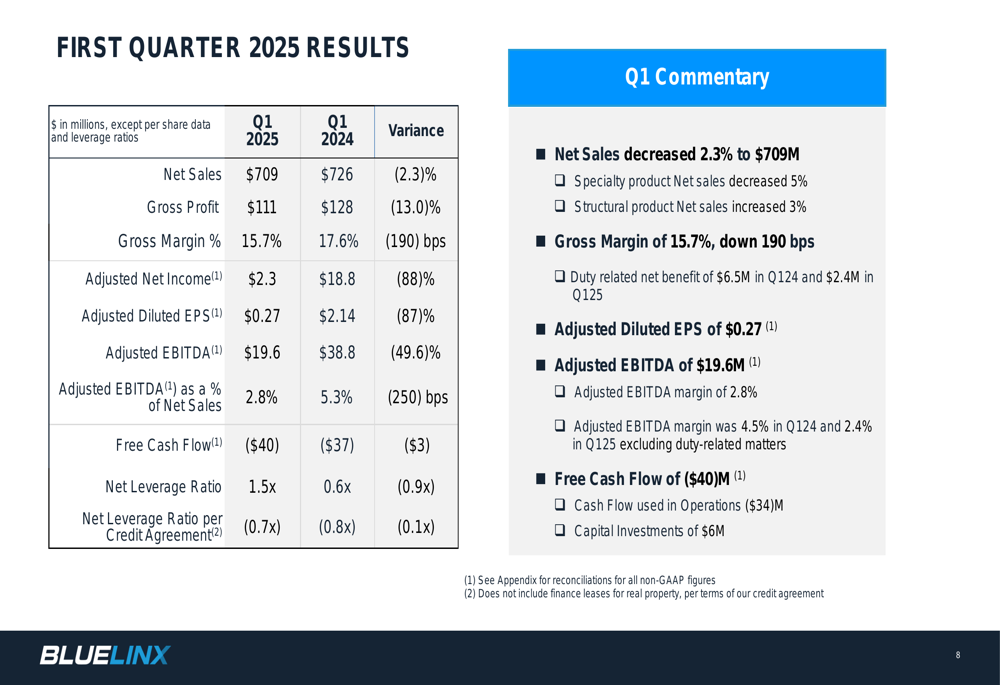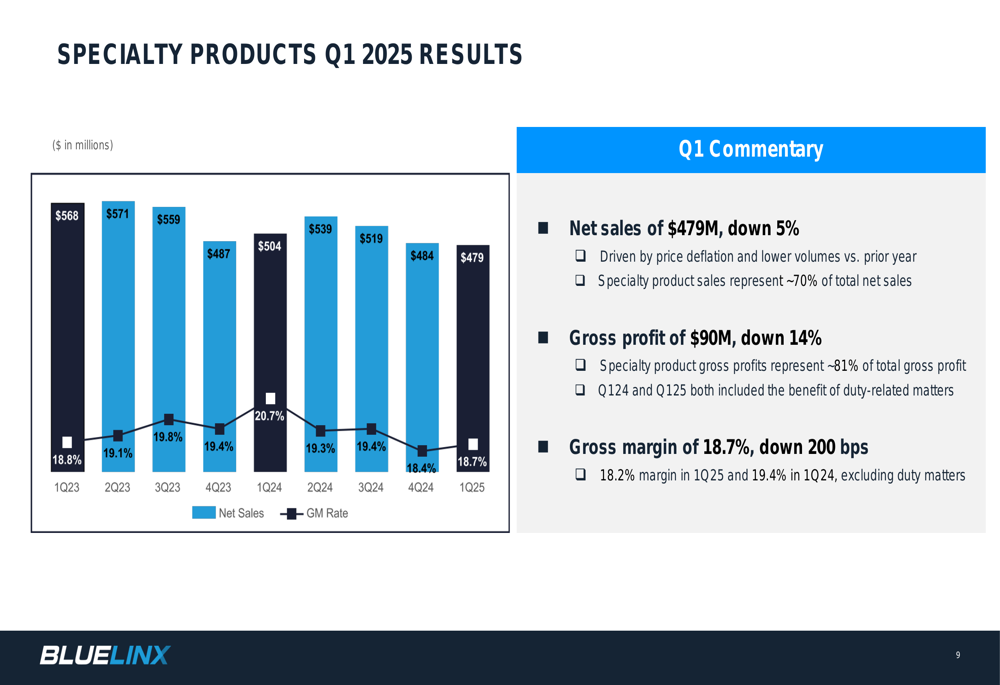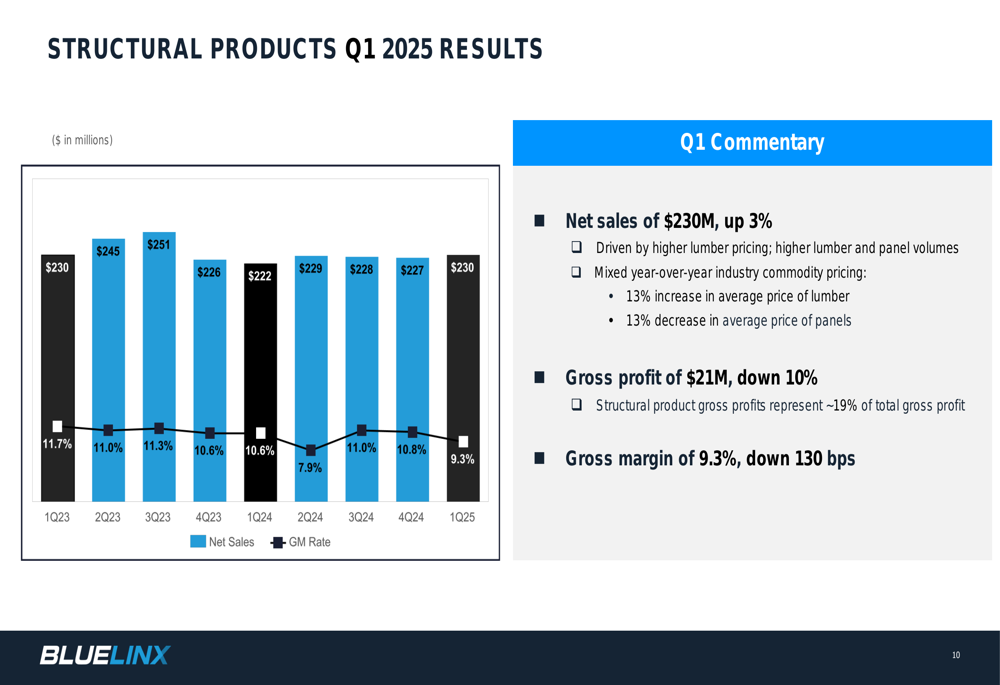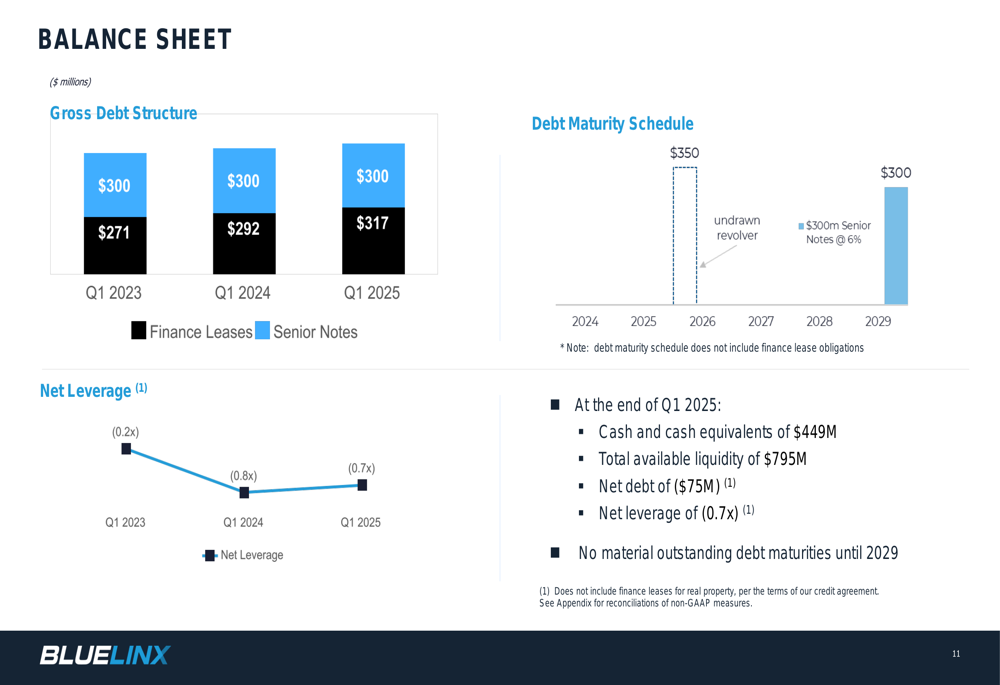Dollar edges higher ahead of Fed minutes; sterling gains after CPI increase
BlueLinx Holdings Inc. (NYSE:BXC), a leading distributor of building and industrial products, reported its first quarter 2025 financial results on April 30, revealing pressure on profitability despite relatively stable sales. The company continues to navigate a challenging housing market environment while maintaining a strong balance sheet position.
Quarterly Performance Highlights
BlueLinx reported net sales of $709 million for Q1 2025, representing a modest 2% year-over-year decline. However, profitability metrics showed more significant pressure, with gross profit falling 13% to $111 million and gross margin contracting 190 basis points to 15.7%. The company posted net income of $2.8 million, translating to diluted earnings per share of $0.33.
As shown in the following comprehensive results summary:

On an adjusted basis, which excludes certain non-recurring items, BlueLinx reported net income of $2.3 million and adjusted diluted EPS of $0.27, down 87% from the prior year. Adjusted EBITDA came in at $19.6 million, representing 2.8% of net sales, a significant decline from the 5.4% margin achieved in Q1 2024.
The company’s free cash flow was negative $40 million for the quarter, slightly worse than the negative $37 million reported in the same period last year, primarily due to seasonal working capital investments.
Segment Performance
BlueLinx’s business is divided into two primary segments: specialty products and structural products. Specialty products, which include engineered wood, siding, millwork, and outdoor living products, continue to drive the majority of the company’s profitability.
The specialty products segment, which accounted for approximately 68% of net sales but 81% of gross profit in Q1 2025, experienced a 5% year-over-year sales decline to $479 million. This decrease was attributed to both price deflation and lower volumes. Despite the sales decline, the segment maintained a relatively strong gross margin of 18.7%, though this represented a 200 basis point contraction from the prior year.
The following chart illustrates the specialty products performance trend:

Meanwhile, the structural products segment, which includes lumber, plywood, and OSB, saw a 3% increase in net sales to $230 million, driven by higher volumes. However, gross profit in this segment declined 10% to $21 million, with gross margin contracting 130 basis points to 9.3%.
The following chart shows the structural products performance:

Market Context
BlueLinx’s performance reflects the broader challenges in the U.S. housing market. According to the company’s presentation, March total housing starts decreased 11.4% from February, though they increased 1.9% year-over-year. Builder confidence remained relatively low at 40 in April, up slightly from March but down significantly from 51 in April 2024.
Home affordability continues to be a significant challenge for the industry, with mortgage rates remaining elevated despite coming down from historic highs. The repair and remodel market, which accounts for approximately 45% of BlueLinx’s sales, is expected to improve slightly in 2025, though spending remains below peak 2022 levels.
Balance Sheet Strength & Capital Allocation
Despite the challenging operating environment, BlueLinx maintains a strong financial position. The company reported cash and cash equivalents of $449 million as of the end of Q1 2025, with total available liquidity of $795 million. Net debt stood at negative $75 million, resulting in a net leverage ratio of negative 0.7x.
The following chart illustrates the company’s solid balance sheet position:

BlueLinx’s debt maturity schedule is favorable, with no material outstanding debt maturities until 2029, when $300 million in senior notes come due. This strong liquidity position provides the company with significant flexibility to pursue its strategic initiatives despite near-term market challenges.
The company’s capital allocation framework prioritizes maintaining a strong balance sheet while allowing for strategic investments. BlueLinx has indicated a willingness to increase its net leverage to around 2.0x when considering growth opportunities, suggesting potential for acquisitions or other expansion initiatives.
Strategic Initiatives & Outlook
BlueLinx continues to focus on several strategic priorities to drive long-term growth and shareholder value. These include expanding its specialty products portfolio, pursuing bolt-on acquisitions, and exploring greenfield expansion opportunities.
The company’s strategic framework is illustrated in the following diagram:

Digital transformation remains a key enabler of BlueLinx’s strategy, with initiatives aimed at enhancing technology and tools to improve operational efficiency and customer experience. The company is also focused on operational excellence, including scale advantages from its nationwide footprint and cost management initiatives.
Looking ahead, BlueLinx expects the housing market to remain challenging in the near term but maintains a positive outlook on long-term housing trends. The company believes its strong balance sheet and strategic focus on specialty products position it well to navigate the current market environment while capitalizing on future growth opportunities.
President and CEO Shyam Reddy emphasized the company’s strategic priorities during the presentation, highlighting the importance of specialty products growth, operational excellence, and disciplined capital allocation in creating long-term shareholder value despite the cyclical nature of the housing market.
Full presentation:
This article was generated with the support of AI and reviewed by an editor. For more information see our T&C.
